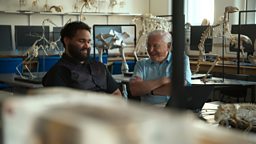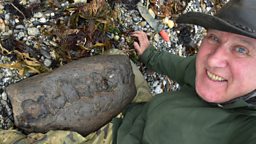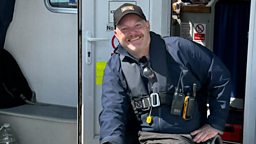The challenges of bringing a 150-million-year-old pliosaur to life
By Niall Strawson, Assistant Producer on Attenborough and the Giant Sea Monster

Having worked in the industry for many years, this project represented a new challenge: rather than filming a well-studied animal - our subject was an inanimate rock.
It’s only through the staggering expertise of our experts that this rock comes alive – Steve Etches and others like him are really like detectives working through a crime scene, using the smallest bits of information to paint a picture. And using that information, it was a no-brainer to use the latest VFX (visual effects) to bring this ‘picture’ to life for the viewers.
Making a CGI (computer-generated imagery) pliosaur is a slow and expensive process, but making a digital ocean for it to swim in is also difficult and time consuming. We needed to film back plates – a term for real life background scenes - in which the digital Pliosaur can be super-imposed. I was asked to take this on – a first for me as assistant producer.
After researching what the seas may have looked like 150 million years, it ago it became clear that warm tropical coral seas were the closest match in our modern world.
First step is designing the storyboards for what we want each VFX sequence to tell us. The VFX producers designed short sequences depicting the pliosaur, which would illustrate what the fossil could tell us about how these animals lived and hunted 150 million years ago.
Second step is then to translate these storyboards into real life underwater scenarios and how we could film them. We would need at least two divers, boats, multiple different cameras and shot types - not to mention crystal clear water.
This was no easy task! I contacted many top tier underwater camera operators but alas diaries were full, conditions not right, or they simply didn’t know how to film for VFX. It was like finding a needle in a haystack. We researched a number of potential filming locations across the globe, and eventually chose the west coast of Australia, as that seemed to tick all the boxes for us.
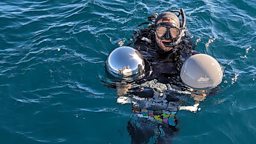
Next step – how do we film this? Normally we would send a director out the help with the shots, but we didn’t have the time to do this - so it became a remote shoot. Underwater shoots are notoriously hard to direct as there is no way to communicate with the team underwater, and that’s when you’re on a boat a few metres above them. I was 8,500 miles away. To overcome this, we had many Zooms and iterations of the storyboards whereby each shot was interrogated with the dive team. For us who are used to filming real animals it was a learning curve to figure out how to film an empty space but frame the shots to include an animal the size of a London Bus and often moving though the frame too. The ‘imagine you are filming a whale’ became a very useful tool.
we overcame the challenges of remote directing an underwater VFX dive shoot
Over the next few days, we worked our way through the storyboards with the team delivering stunning footage day after day. Using divers as surrogates for our Pliosaur, they swam through the frame, allowing us to track them and eventually super impose the trajectory and location of the diver with our digital Pliosaur. We had free divers, scuba divers, underwater scooters - it was quite the production to achieve the shots we wanted.
It was a frantic set up, challenging conditions and a difficult creative brief. However, as an international team split between the UK and Australia, we overcame the challenges of remote directing an underwater VFX dive shoot with a 12-hour time difference. Trust and good communication were key and with a bit of fast thinking we got the perfect backplates. It was a baptism of fire for me, but one I’m very proud of.
The project has been one of many firsts for me: a palaeontology project, filming an animal that doesn’t move, working with Sir David Attenborough and learning how to make VFX sequences. But what I am most impressed by is how we can learn so much from so little. The UK is home to such great palaeontologists who with each discovery can help us understand a little bit more about animal life in the past and how it relates to animal life today. I often found myself stopping and thinking just how astonishing it is what we can learn from a ‘rock’. Mind blown.
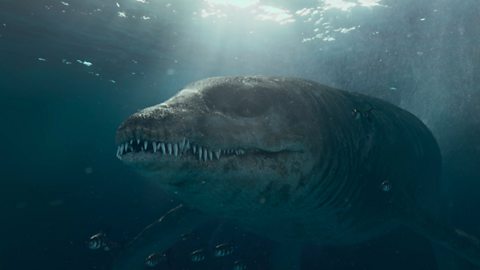
The giant sea monster of the late Jurassic
A giant pliosaur skull fossil has been discovered in the cliffs of the Jurassic Coast.
